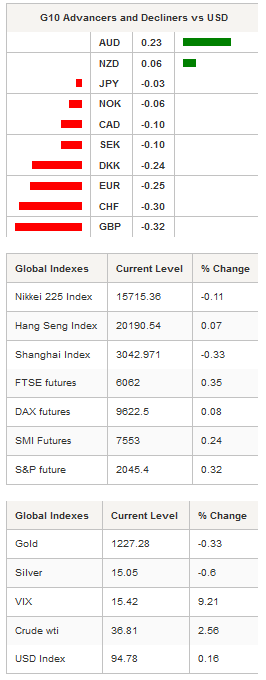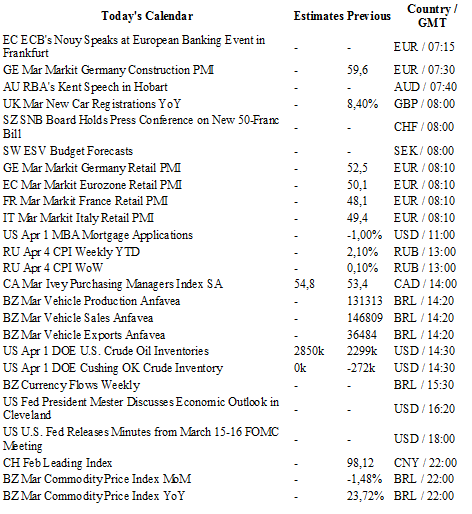Market Brief
Judging by the latest data from China, it seems that the world’s second biggest economy is stabilizing and that the effects of several rounds of easing undertaken by the PBoC, together with the government’s fiscal stimulus, did in fact help the economy to adjust to the new environment of weak global demand. After last week’s encouraging signs from the manufacturing sector, both the Caixin Services and Composite PMIs increased in March, printing above the 50 mark that separates growth from contraction.
Services PMI came in at 52.2 after printing at 51.2 in February, while Composite PMI rose to 51.3 from 49.4. However, one should interpret this good news cautiously, as the report also showed that composite employment fell at the fastest pace since January 2009. Overall, the report confirmed that China’s economic activity rebounded after the Chinese New Year, but failed to clear the clouds on the horizon, suggesting that further stimulus is required to soften the impact.

In the absence of a clear driver, Asian regional equity markets were trading trendless, taking a breather from yesterday’s sell-off. In mainland China, the Shanghai Composite edged down 0.33%, while the tech-heavy Shenzhen Composite was “up” 0.07%. In Japan, equities were trading in negative territory with the Nikkei and Topix indices edging lower by 0.11% and 0.05% respectively.
Elsewhere, shares were trading higher, boosted by a recovery in crude oil prices. The S&P/ASX rose 0.44% and the S&P/NZX surged 0.27% as West Texas Intermediate jumped 2.56%, while the Brent crude rose 1.69% to $38.50 a barrel.
The Australian dollar got some color back during the Asian session, taking a breather from the sell-off, which brought the AUD/USD to 0.7510 from 0.7720, down 2.75%. Overnight the pair edged higher, hitting 0.7560. We maintain our downside bias on the pair, as the weakness in commodity prices and a looming rate cut by the RBA should prevent investors from supporting the Aussie.
EUR/USD was treading water between 1.1340 and 1.14, as investors were left wondering whether the pair would be able to break the strong resistance lying between 1.1375-1.1495 (high from February 11th and October 15th) to the upside. On the downside, the nearest support can be found at 1.1335 (low from April 1st), then 1.1310 (low from March 31st).
USD/JPY was unable to break the strong 110 support to the downside and stabilized at around 110.40. Overall, with the exception of commodity currencies, the FX market was globally driven by the US dollar. The dollar index consolidated slightly below the 95 threshold, at around 94.80. The bias remains on the downside as the monetary policy divergence story loses traction, while the market awaits the FOMC minutes. The next support lies at 93.80 (low from October 15th).
Today, traders will be watching Markit Retail PMIs from Germany, France, Italy and the eurozone; MBA mortgage applications, crude oil inventories and FOMC minutes from the US.

Currency Technicals
EUR/USD
R 2: 1.1714
R 1: 1.1495
CURRENT: 1.1367
S 1: 1.1144
S 2: 1.1058
GBP/USD
R 2: 1.4591
R 1: 1.4459
CURRENT: 1.4144
S 1: 1.4033
S 2: 1.3836
USD/JPY
R 2: 113.80
R 1: 112.68
CURRENT: 110.30
S 1: 107.61
S 2: 105.23
USD/CHF
R 2: 0.9913
R 1: 0.9788
CURRENT: 0.9579
S 1: 0.9476
S 2: 0.9259
